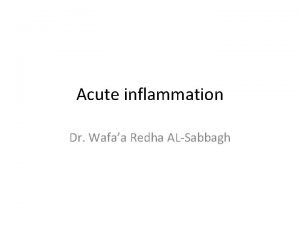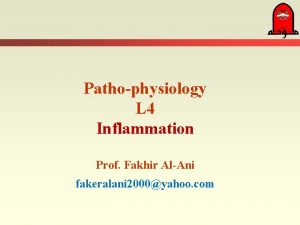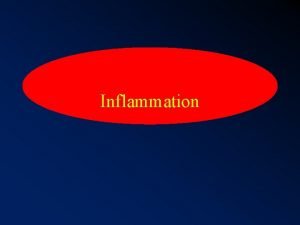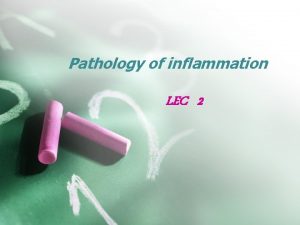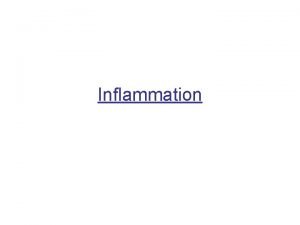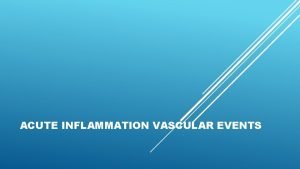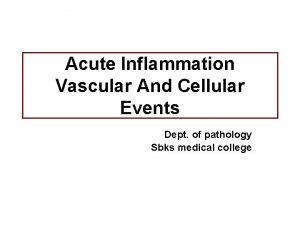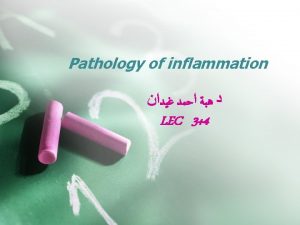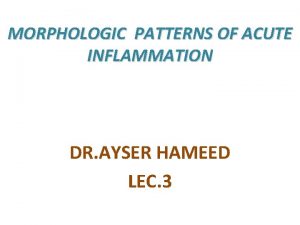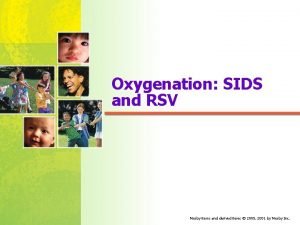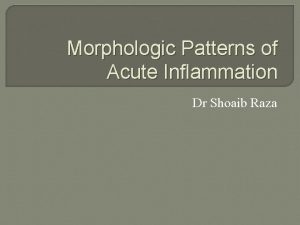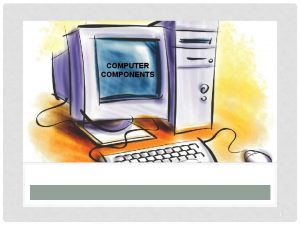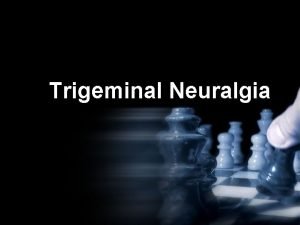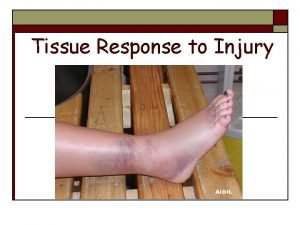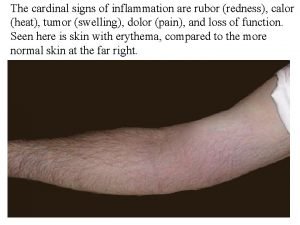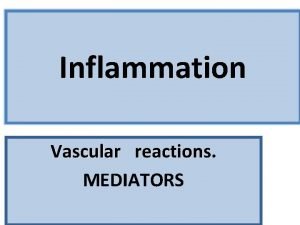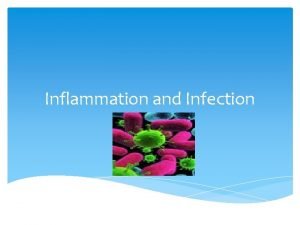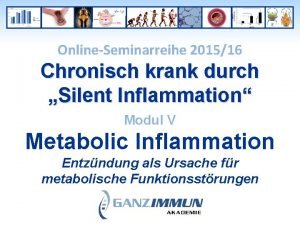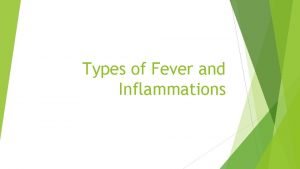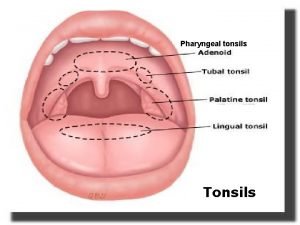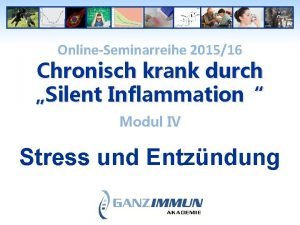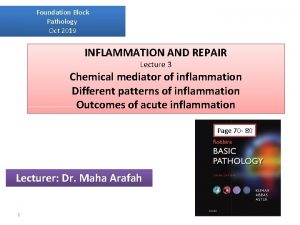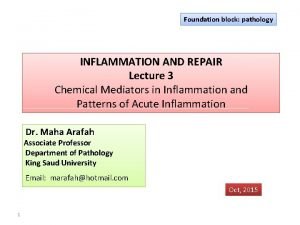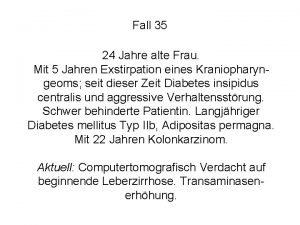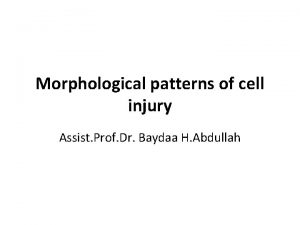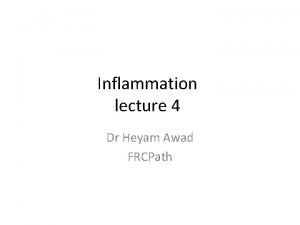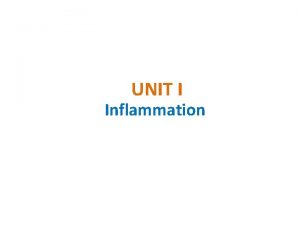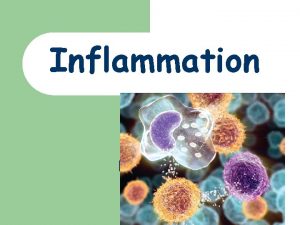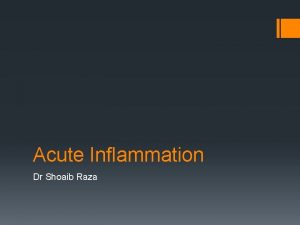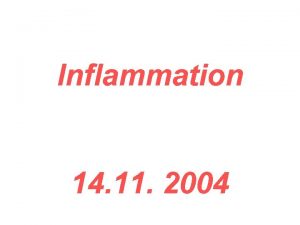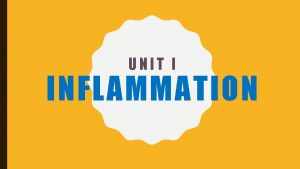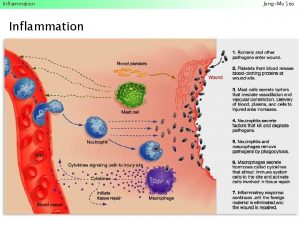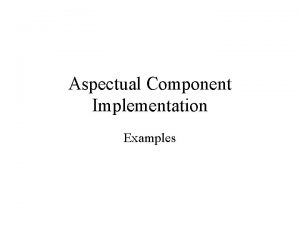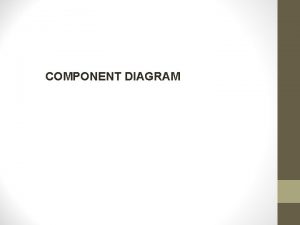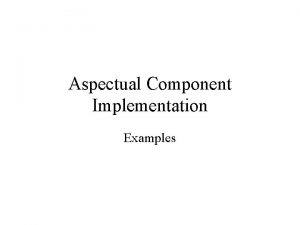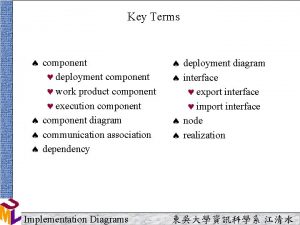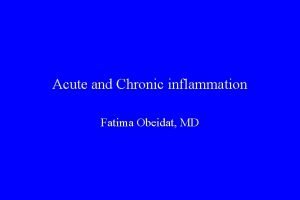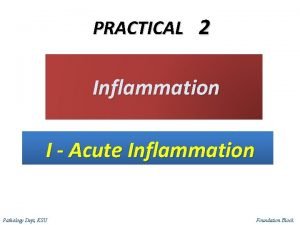ACUTE INFLAMMATION ACUTE INFLAMMATION COMPONENT Definition Acute inflammation







































- Slides: 39

ACUTE INFLAMMATION

ACUTE INFLAMMATION COMPONENT Definition: Acute inflammation is a rapid response to an injurious agent that serves to deliver mediators of host defense-leukocytes and plasma proteins-to the site of injury. Acute inflammation has three major components: (1) alterations in vascular caliber that lead to an increase in blood flow; (2) structural changes in the microvasculature that permit plasma proteins and leukocytes to leave the circulation; (3) emigration of the leukocytes from the microcirculation, their accumulation in the focus of injury, and their activation to eliminate the offending agent. (Robbins, 7 th ed. ) When a host encounters an injurious agent, such as an infectious microbe or dead cells, phagocytes that reside in all tissues try to get rid of these agents. At the same time, phagocytes and other host cells react to the presence of the foreign or abnormal substance by liberating cytokines, lipid messengers, and the various other mediators of inflammation.

PLASMA PROTIEN & ACUTE INFLAMMATION Plasma proteins leave the vessels, most commonly through widened interendothelial cell junctions of the venules. The redness (rubor), warmth (calor), and swelling (tumor) of acute inflammation are caused by the increased blood flow and edema. Circulating leukocytes, initially predominantly neutrophils, adhere to the endothelium via adhesion molecules, transmigrate across the endothelium, and migrate to the site of injury under the influence of chemotactic agents. Leukocytes that are activated by the offending agent and by endogenous mediators may release toxic metabolites and proteases extracellularly, causing tissue damage. During the damage, and in part as a result of the liberation of prostaglandins, neuropeptides, and cytokines, one of the local symptoms is pain (dolor. (

Plasma proteins leave the vessels, most commonly through widened interendothelial cell junctions of the venules. The redness (rubor), warmth (calor), and swelling (tumor) of acute inflammation are caused by the increased blood flow and edema. Circulating leukocytes, initially predominantly neutrophils, adhere to the endothelium via adhesion molecules, transmigrate across the endothelium, and migrate to the site of injury under the influence of chemotactic agents. Leukocytes that are activated by the offending agent and by endogenous mediators may release toxic metabolites and proteases extracellularly, causing tissue damage. During the damage, and in part as a result of the liberation of prostaglandins, neuropeptides, and cytokines, one of the local symptoms is pain (dolor. (

ACUTE INFLAMMATION Mediators INJURY Acute inflammation

ACUTE INFLAMMATION

ACUTE INFLAMMATION

ACUTE INFLAMMATION SEQUENCE OF EVENTS Vasoconstriction Vasodilation Increased vascular permeability Hemoconcentration and stasis Leukocyte Adhesion Transmigration Chemotaxis Aggregation Phagocytosis

ACUTE INFLAMMATION VASODILATION

ACUTE INFLAMMATION VASODILATION

ACUTE INFLAMMATION Increase in Permeability INCREASED VASCULAR PERMEABILITY Histamine (Mast Cells) Seratonin (Platelets) Time

ACUTE INFLAMMATION HEMOCONCENTRATION AND STASIS Normal flow Stasis

ACUTE INFLAMMATION LEUKOCYTE ADHESION

ACUTE INFLAMMATION LEUKOCYTE ADHESION

ACUTE INFLAMMATION EMIGRATION (TRANSMIGRATION)

ACUTE INFLAMMATION EMIGRATION (TRANSMIGRATION)

ACUTE INFLAMMATION CHEMOTAXIS

ACUTE INFLAMMATION AGGREGATION

ACUTE INFLAMMATION PHAGOCYTOSIS - ATTACHMENT

ACUTE INFLAMMATION PHAGOCYTOSIS - ENGULFMENT

ACUTE INFLAMMATION PHAGOCYTOSIS – KILLING AND DEGRADATION

ACUTE INFLAMMATION

ACUTE INFLAMMATION PATTERNS Serous Catarrhal Fibrinous Hemorrhagic Suppurative Gangrenous Pseudomembranous

ACUTE INFLAMMATION SEROUS

ACUTE INFLAMMATION SEROUS

ACUTE INFLAMMATION CATARRHAL

ACUTE INFLAMMATION FIBRINOUS

ACUTE INFLAMMATION SUPPURATIVE / PURULENT

ACUTE INFLAMMATION SUPPURATIVE / PURULENT - ABSCESS

ACUTE INFLAMMATION SUPPURATIVE / PURULENT - ABSCESS

ACUTE INFLAMMATION SUPPURATIVE / PURULENT - EMPYEMA

ACUTE INFLAMMATION ULCERATIVE

ACUTE INFLAMMATION GANGRENOUS

ACUTE INFLAMMATION GANGRENOUS Appendix Gallbladder

ACUTE INFLAMMATION PSEUDOMEMBRANOUS

ACUTE INFLAMMATION LOCAL MANIFESTATIONS Heat Redness Swelling Pain Loss of function

ACUTE INFLAMMATION SYSTEMIC MANIFESTATIONS Fever Chills Myalgia Discomfort

ACUTE INFLAMMATION LABORATORY MANIFESTATIONS Leukocytosis (granulocytosis vs. lymphocytosis) Elevated serum acute phase proteins (C-reactive protein, fibrinogen, etc) Increased ESR (erythrocyte sedimentation rate) Hypercoagulability

ACUTE INFLAMMATION SEQUELAE RESOLUTION Mediators INJURY Acute inflammation M Mediators rs o at i ed Chronic irritation Viral infection Autoimmune disease Chronic inflammation
 Dr el sabbagh
Dr el sabbagh Diabedesis
Diabedesis Sequelae of acute inflammation
Sequelae of acute inflammation Acute inflammation definition
Acute inflammation definition Acute inflammation
Acute inflammation Morphological pattern of acute inflammation
Morphological pattern of acute inflammation Cellular events of acute inflammation
Cellular events of acute inflammation Acute inflammation
Acute inflammation Vascular response in acute inflammation
Vascular response in acute inflammation Cellular events of acute inflammation
Cellular events of acute inflammation O que é isso
O que é isso Morphologic patterns of acute inflammation
Morphologic patterns of acute inflammation Acute inflammation
Acute inflammation Morphological pattern of acute inflammation
Morphological pattern of acute inflammation Acute inflammation
Acute inflammation Output devices definition
Output devices definition Pathophysiology of appendicitis
Pathophysiology of appendicitis Cardiac output trained vs untrained
Cardiac output trained vs untrained Periodontitis acuta serosa
Periodontitis acuta serosa Acute scrotum definition
Acute scrotum definition Acute angle definition
Acute angle definition Trigeminal neuralgia
Trigeminal neuralgia Cardinals signs of inflammation
Cardinals signs of inflammation Cardinal symptoms of inflammation
Cardinal symptoms of inflammation Pflegmona
Pflegmona Stages of inflammation
Stages of inflammation Inflammation
Inflammation 5 cardinal signs of inflammation
5 cardinal signs of inflammation Types of inflammation
Types of inflammation Ganzimmun
Ganzimmun F
F Tubal tonsil
Tubal tonsil Cortisol tagesprofil ganzimmun
Cortisol tagesprofil ganzimmun Bradykinin nitric oxide
Bradykinin nitric oxide Inflammation ros
Inflammation ros Infiltrate thesaurus
Infiltrate thesaurus Cell injury and inflammation
Cell injury and inflammation Sublingual dermoid
Sublingual dermoid Dry gangrene vs wet gangrene
Dry gangrene vs wet gangrene Chemical mediators of inflammation
Chemical mediators of inflammation
